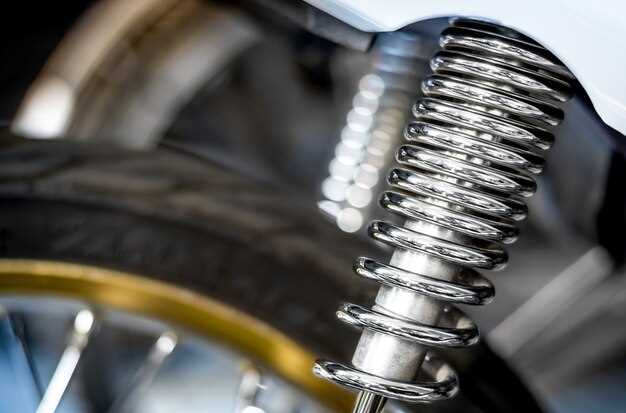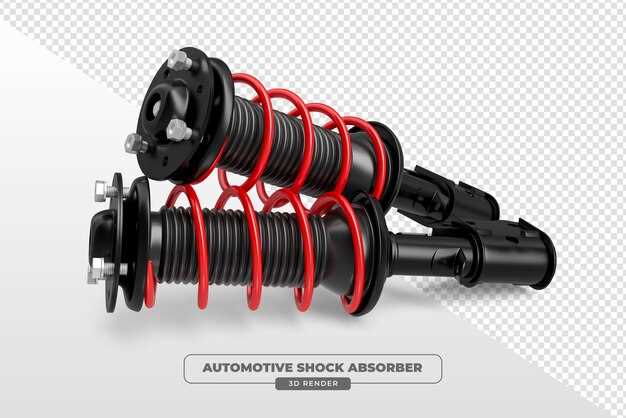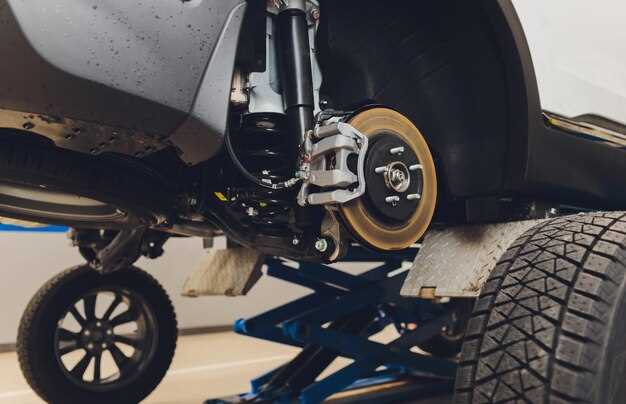Upgrading Suspension for VW Track Days

For Volkswagen enthusiasts, optimizing the setup of their vehicle’s suspension is crucial for achieving superior performance on the track. The right suspension components not only improve handling and stability but also enhance overall driving experience in competitive environments. Whether you’re racing on a closed circuit or tackling an advanced autocross course, upgrading your VW’s suspension can make a significant difference.
Many factors contribute to a vehicle’s performance characteristics, but the suspension system plays a pivotal role. A well-tuned setup minimizes body roll, enhances grip, and allows for better cornering capabilities, making it essential for track-focused driving. When considering upgrades, VW owners should pay attention to options like coilovers, sway bars, and bushings to tailor their suspension setup according to their specific performance goals.
In this article, we will explore various suspension upgrades that can elevate your VW’s track performance. By understanding the mechanics of different components and how they interact with each other, you can create a customized suspension system that maximizes your vehicle’s potential and provides an exhilarating driving experience on the track.
Choosing the Right Coilovers for VW Track Applications

When it comes to enhancing your VW’s performance on the track, choosing the right coilovers is crucial. Coilovers are essential components that influence handling, ride quality, and overall stability during high-speed maneuvers. To achieve an optimal track setup, it’s important to consider several key factors.
Firstly, adjustability is a significant feature to look for in coilovers. Many track applications require precise tuning for different conditions and track layouts. Adjustable coilovers allow drivers to modify ride height and damping settings, providing the flexibility needed to maximize performance. Look for models that offer independent adjustments for rebound and compression to fine-tune your setup effectively.
Secondly, spring rates play a vital role in how your VW handles on the track. Higher spring rates generally offer improved stiffness for better cornering performance, while lower rates can enhance comfort. Finding the right balance between stiffness and comfort is key for both competitive racing and track days. It’s advisable to consult with experts or experienced drivers to determine the optimal spring rates based on your specific driving style and track conditions.
Another important aspect is material quality. Coilovers made from high-quality materials, such as aluminum or stainless steel, are not only more durable but also resistant to corrosion. This is essential for track applications where equipment is subjected to harsh conditions and potential wear over time. Investing in well-built coilovers ensures that you get the most out of your VW’s performance without the worry of premature failure.
Finally, consider compatibility with your vehicle’s existing setups. Not all coilovers will fit every VW model, and installation may require specific modifications. Always check the manufacturer’s specifications to ensure seamless integration with your current suspension system. Additionally, it’s wise to read reviews and seek recommendations from fellow VW enthusiasts to identify brands that have a solid reputation for track performance.
In summary, selecting the right coilovers for your VW’s track applications involves considering factors like adjustability, spring rates, material quality, and compatibility. By focusing on these elements, you can develop a suspension setup that significantly enhances your vehicle’s performance on the track.
Tuning Suspension Geometry for Improved Handling on the Track
Tuning the suspension geometry of your VW is crucial for maximizing performance on the track. The right setup can significantly enhance handling, allowing for faster cornering and improved stability. Key aspects include camber, caster, and toe settings, which should be fine-tuned based on your specific driving style and track conditions.
Adjusting camber angles is vital for optimizing tire contact with the road during aggressive cornering. A negative camber setup helps to increase grip by allowing a larger portion of the tire to make contact with the pavement when the vehicle is leaned over in a turn. This leads to improved cornering performance and reduced understeer.
Caster angle also plays an essential role in handling dynamics. Increasing the caster can enhance steering stability and feedback, making it critical for track performance. However, it’s important to find a balance; excessive caster may lead to increased steering effort, which can be taxing during longer sessions.
Toe settings impact responsiveness and straight-line stability. A slight toe-out can improve turn-in response, making the car feel more agile during quick transitions. Conversely, a slight toe-in may provide better stability when tracking straight, particularly at high speeds. Adjustments based on track layout and individual preferences can lead to significant handling improvements.
Lastly, combining these geometric adjustments with quality suspension components, such as adjustable coilovers or performance struts, allows for a comprehensive optimization of your VW’s setup. Proper alignment after any adjustments is key to ensuring that the changes produce the desired outcomes, making regular checks an important part of your track preparation routine.
In conclusion, fine-tuning the suspension geometry of your VW can greatly enhance track handling. Pay close attention to camber, caster, and toe adjustments, as each setting contributes to the overall performance and feel of your vehicle on the track.
Maintenance Tips for Keeping Your VW Suspension Track-Ready

To ensure your VW suspension remains in optimal condition for track performance, regular inspections are crucial. Start by checking the integrity of all suspension components, including control arms, bushings, and struts. Look for any signs of wear or damage that could affect handling.
Next, ensure that your suspension geometry is properly aligned. Misalignment can lead to uneven tire wear and compromised handling. Schedule a professional alignment after any significant adjustment or replacement of suspension parts.
Lubrication is essential for maintaining the performance of various suspension joints. Regularly apply appropriate grease to bushings and ball joints to minimize friction and prolong their lifespan. Make sure to use high-quality products specifically designed for automotive suspension.
Monitor fluid levels in your struts and shocks. Any signs of leakage should be addressed immediately, as they may lead to decreased performance. Replacing worn-out shocks or struts is critical for maintaining control and stability on the track.
Regularly inspect and replace suspension springs if needed. Over time, springs can lose their tension and may not perform efficiently during track conditions. Upgrading to performance springs can improve handling characteristics significantly.
Lastly, clean your suspension components to prevent dirt and debris buildup that can cause premature wear. Pay special attention to components exposed to the elements, and consider using protective coatings to enhance longevity.



